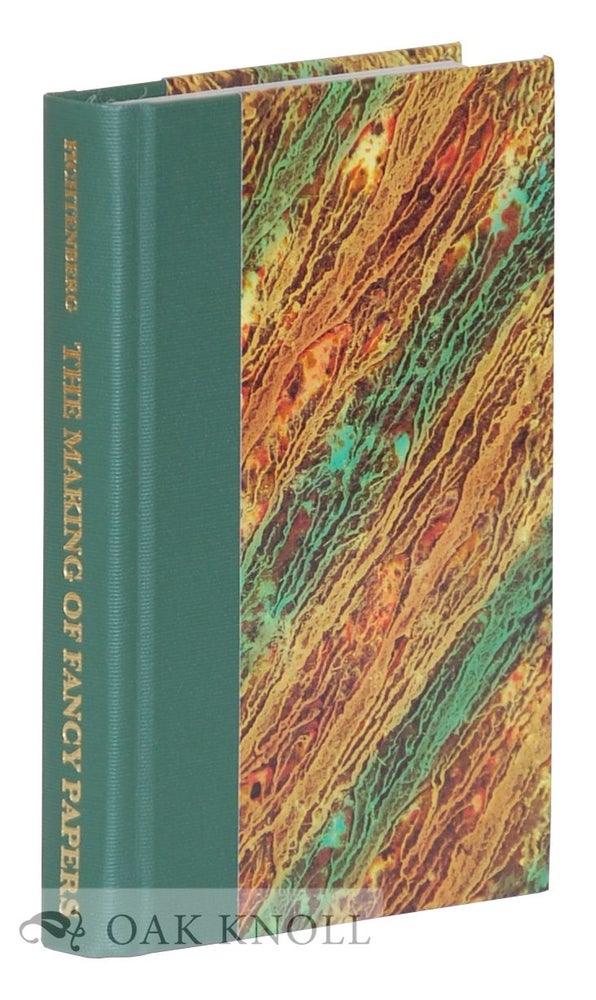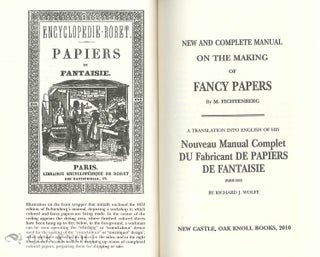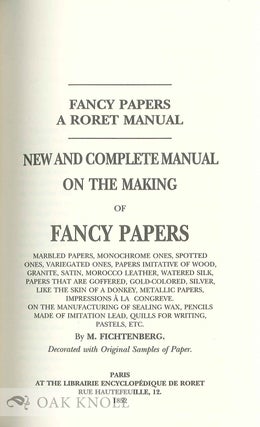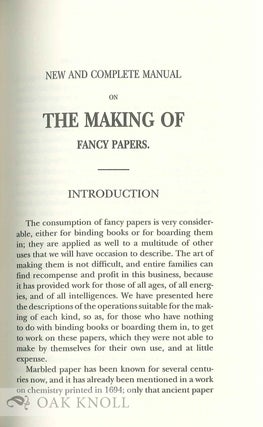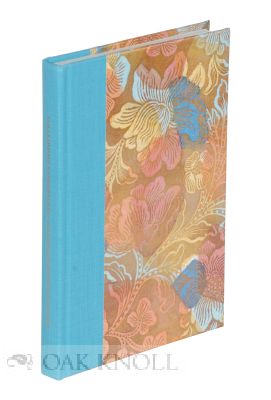NEW AND COMPLETE MANUAL ON THE MAKING OF FANCY PAPERS BY M. FICHTENBERG.
Edited by Richard J. Wolfe
- New Castle, Delaware: Oak Knoll Press, 2010.
- 5 x 7.25 inches
- hardcover
- 242 pages
- ISBN: 9781584562948
Price: $85.00 other currencies
Order Nr. 106047
New and Complete Manual on the Making of Fancy Papers was originally written in French by M. Fichtenberg in 1852. Richard Wolfe has translated the book into English and added a new preface.
The craft of marbling paper was introduced into Europe and the Middle East from Turkey and Germany during the last two decades of the sixteenth century, and then into France in the first decade of the seventeenth century. England, Italy, Spain, Sweden, and other European countries began marbling as well, but the production outside of England still remained small. It was not until its introduction into the British Isles in 1750 that marbling increased in popularity.
In France, marbling was first performed by bookbinders who catered mainly to the needs of the book trade. This often meant marbled papers were used for decorating "extra" bindings, or even sometimes made for people who restricted their output to wallpaper. Fortunately, the nineteenth century saw a change in French marbling, as they were introduced to a Turkish pattern containing an infusion of turpentine in the final color. This created an appearance of a network of fine, lacey holes.
New and Complete Manual on the Making of Fancy Papers documents the changes and innovations in French marbling, and describes the marbling and fancy paper trades of the mid-nineteenth century. It also provides technical details on the manufacture of these papers and is a key source for information that couldn't be found anywhere else at the time.
This manual describes many steps in the marbling process. It describes the methods of making colors and the preparation of the aluminum serving to give body to the colors including reds and violets, yellows, blues, and greens. It discusses the preparation of hide glue, paste, glue, glazing, polishers, workshops, troughs, papers that are quilted, papers exhibiting the grain of wood, granite papers, printing, varnishing, sealing wax, and a variety of other details. Four pages of color illustrations complete the book.

